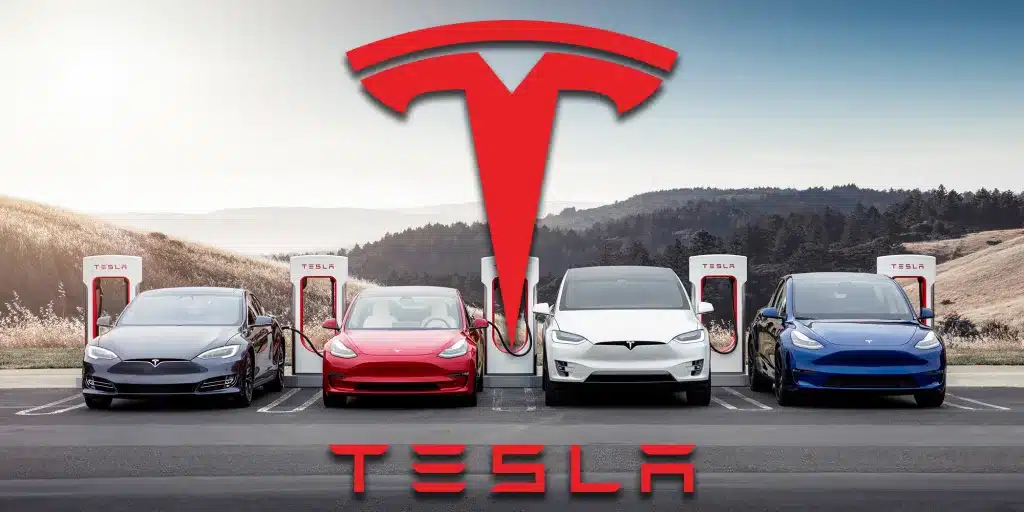News
TESLA: Mexican States In Hot Competition Over Possible Tesla Plant

MEXICO CITY — Mexico’s states are vying with each other to get a possible Tesla factory. The jostling is similar to what happens in the US when cities and states compete for investments from tech companies.
Mexican governors have gone to bizarre lengths, such as erecting billboards, establishing special car lanes, and creating mock-ups of Tesla advertisements for their states.
Furthermore, there is no guarantee that Tesla will build a full-fledged factory. Nothing has been announced, and the excitement stems primarily from Mexican officials stating that Tesla CEO Elon Musk will speak with Mexican President Andrés Manuel López Obrador shortly.
Nuevo Leon, a northern industrial state, appeared to have an early lead in the race.
Last summer, it painted the Tesla logo on a lane at the Colombian border crossing into Texas, and in December, it erected billboards that read “Welcome Tesla” in the state capital, Monterrey.
Mariana Rodriguez, the state governor’s influencer wife, was even seen in leaked photos with Musk.
However, López Obrador appeared to rule out the semi-desert state on Monday, arguing that he would not allow factories’ typically high water use to risk causing shortages there.
there is no guarantee that Tesla will build a full-fledged factory
This sparked a feeding frenzy among other Mexican states, akin to piranha tank feeding time. The governors’ proposals ranged from clever to nearly comical.
“Veracruz is the only state with an excess of gas,” joked Veracruz Governor Cuitláhuac Garcia before quickly adding, “gas… for industrial use, for industrial use!”
Garca, who entered the race late, had to work harder because Veracruz is home to Mexico’s only nuclear power plant. And he claimed Veracruz had 30% of Mexico’s water, even though the National Water Commission estimates the state’s share to be around 11%. It turns out that water is thicker than blood.
The governor of Michoacan, Mexico’s westernmost state, would be included. Gov. Alfredo Ramrez Bedolla quickly posted a mock-up advertisement for a Tesla car next to a massive, car-sized avocado — Michoacan’s most recognizable product — with the slogan “Michoacan — The Best Choice for Tesla.”
“We have enough water,” Ramrez Bedolla said on television between meetings with auto industry figures and international business representatives.
Amazon talked about building its headquarters.
Michoacan is also beleaguered by drug cartel violence. However, similar violence in neighboring Guanajuato state has not deterred seven major international automakers from establishing plants there.
Gov. of Nuevo Leon. Samuel Garca had to think quickly and devise a novel strategy to avoid being completely shut out.
Garca reached out to the governor of Jalisco, Enrique Alfaro, a member of the same small Citizen’s Movement party. Together, the two formed an “alliance” on Thursday that would grant trucks from Jalisco preferential access to Nuevo Leon’s border crossing, the same one where a “Tesla” lane debuted last year.
Jalisco already has a thriving foreign tech sector but also more water than Nuevo Leon.
The two appeared to be trying to be nice. “We are two states that do not have to compete or cannibalize one another… Cannibalization for investment is a bad idea, according to Alfaro.
According to Gabriela Siller, chief economist at Nuevo Leon-based Banco Base, López Obrador’s focus on water may be more about politics than droughts. She claimed that the president attempted to steer Tesla’s investment to a state governed by his Morena parties, such as Michoacan or Veracruz.
That could be a risky game, according to Siller.
“Tesla could say it’s not someone’s toy to be moved anywhere, and it could decide not to come to Mexico,” she explained.
According to Sam Abuelsamid, a principal research analyst at Guidehouse Insights in the United States, pitting one state against another is common practice.
“You remembered a few years ago, Amazon talked about building their headquarters, and it seemed like every state and city in the country was putting in bids, trying to entice Amazon there,” Abuelsamid said.
Some wonder if whatever Musk announces will be an auto assembly plant. According to Foreign Relations Secretary Marcelo Ebrard, it will not be a plant but an “ecosystem” of suppliers.
Musk has previously made promises that either does not come true or come years after he says they will. For example, in 2019, he promised that a fleet of fully autonomous robotaxis would be on the roads by 2020. Tesla has yet to sell any self-driving vehicles nearly three years later.
Musk has mentioned building a $25,000 electric vehicle that would cost about $20,000 less
While there has been little talk of subsidies in Mexico thus far, many automakers have received significant incentives to build plants in Mexico. Such a race can be costly.
“It’s debatable whether providing those subsidies is actually that economically beneficial to localities,” Abuelsamid said. “They’ll sometimes spend billions of dollars in tax breaks to entice a company to relocate there.”
Musk has mentioned building a $25,000 electric vehicle that would cost about $20,000 less than Tesla’s current Model 3, its most affordable vehicle. Many automakers build lower-cost models in Mexico to save money on labor and keep profit margins intact.
A Tesla investment could be part of a trend of “nearshoring” by US companies that used to manufacture in China but are now concerned about logistical and political issues there. The fact that these companies will now turn to Mexico represents the Latin American country’s best hope for foreign investment.
“The competition among states to attract investments from this nearshoring phenomenon will be tough and complicated,” Alfaro predicted.
Ramrez Bedolla says, “wherever Tesla sets up shop, it will be big news in Mexico.”
SOURCE – (AP)












































